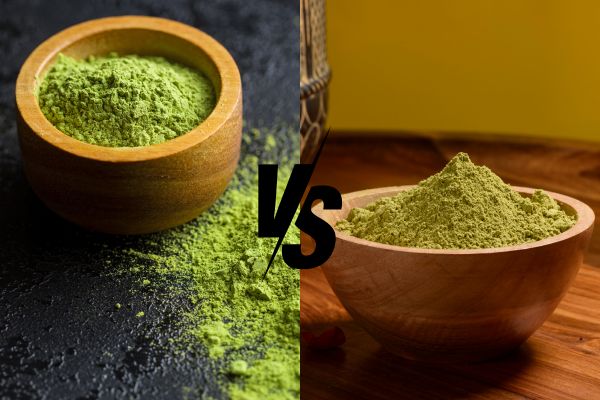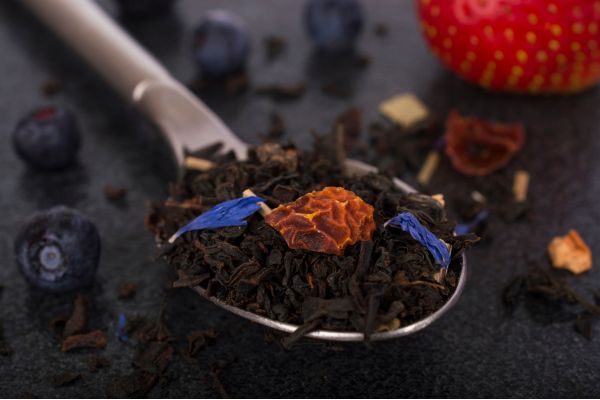Consumers today expect more from their tea, and the flavored tea market is rapidly evolving to meet these expectations. Discover the top emerging tea flavor trends shaping the tea industry in 2025.
Contents
Introduction
As the beverage industry continues to evolve, flavored teas must also innovate to meet the rising expectations of consumers. In 2025, flavor is no longer just about taste, it is about storytelling, functionality, and creating memorable experiences. With the growing demand from consumers for healthier, cleaner, and more enjoyable beverages, flavored teas are transforming. In this article, we explore the key tea flavor trends shaping the market, an important direction for tea brands to research and develop new products.
Global flavored tea market
The global tea market has significant growth opportunities, with many segments showing strong growth trends. According to Statista, the global tea market was valued at around USD 260 billion in 2023 and is expected to rise to USD 362 billion by 2029. The compound annual growth rate ranges from 5.5% to 6.6%, depending on different market segments.
Flavored tea is an important segment of the tea industry. It means tea leaves combined with other flavors, such as flowers, fruits, herbs, and spices. The flavored tea market is experiencing steady and healthy growth worldwide. In 2022, the global market for flavored tea was valued at approximately USD 2.6 billion, and it is expected to reach USD 4.7 billion by 2030, according to research. That reflects a CAGR of 7.9%, making it one of the fastest-growing categories within the broader tea industry.
Ready-to-drink (RTD) tea is also a particularly strong segment. The RTD tea market will probably reach USD 40 billion by 2025, according to Future Market Insights. In this category, consumers are always seeking new flavors and experiences, driving continuous innovation and the development of unique, exciting tea products.
Tea consumption is also rising in both mature and emerging markets. In the U.S. and Europe, flavored teas are appealing to Gen Z and Millennials for their health halo and aesthetic presentation. Meanwhile, in Asia, traditional ingredients are being modernized for a new wave of premium tea blends.
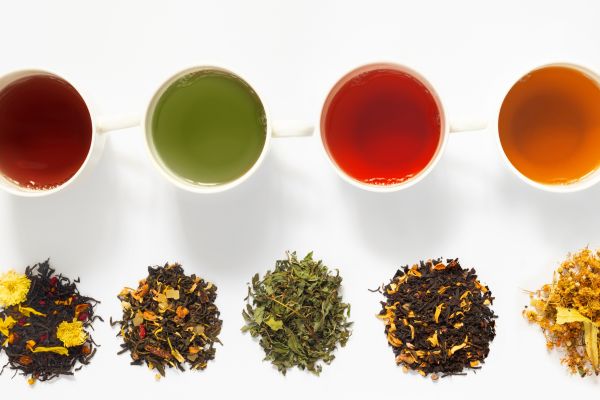
Top trending ingredients in tea flavors
Tea flavors are becoming more innovative and exciting in response to rising health awareness, the influence of social media trends, and the evolving tastes of younger consumers. While familiar fruit flavors remain popular, there is a growing presence of regionally inspired flavors in new tea product launches. Let’s explore tea flavor trends in recent years!
Tropical and exotic fruits
Fruit-flavored teas remain a top choice among consumers. While classic options like lemon and peach are still popular, there is a growing interest in fruit teas with more regional and unique flavor profiles. Yuzu, a zesty Japanese citrus, has been growing in product launches over the last year for both hot and cold teas. Its fragrant, slightly sour taste pairs well with green tea and offers a sophisticated alternative to lemon.
Exotic tropical flavors are also gaining traction. Passionfruit, lychee, pineapple, and guava deliver vibrant sweetness and work well in iced tea and bubble tea applications. These flavors appeal especially to younger demographics seeking refreshing and adventurous taste experiences. These exotic fruits do more than provide flavor, they tap into consumer desires for travel, culture, and novelty. Brands that highlight the origin and story behind each fruit are especially successful in capturing attention on shelves and online. Twinings tea brand has launched many products featuring tropical fruit flavors, with combinations such as peach and passion fruit, mango and pineapple, attracting the attention of consumers.

Floral and botanical ingredients
Natural botanicals are becoming increasingly important in tea formulations. Hibiscus stands out with its tart, cranberry-like taste and brilliant red hue. Beyond its striking appearance, hibiscus is rich in antioxidants and is linked to cardiovascular benefits, which makes it a staple in detox and immunity teas.
Lavender and rose are both valued for their calming, aromatic properties. They are commonly used in blends that aid in sleep, stress reduction, and hormonal balance. These botanicals are especially popular in caffeine-free evening teas and artisan loose-leaf blends designed for mindfulness and relaxation. Many famous tea brands like Yogi, Pukka, and Twinings have introduced a range of products that combine lavender and rose and emphasize their effects in helping to calm and relax.
Besides, chamomile remains a timeless favorite, but newer botanicals like butterfly pea flower are trending for their color-changing ability, shifting from blue to purple with a squeeze of lemon. This novelty has attracted attention on social media, leading to increased searches.
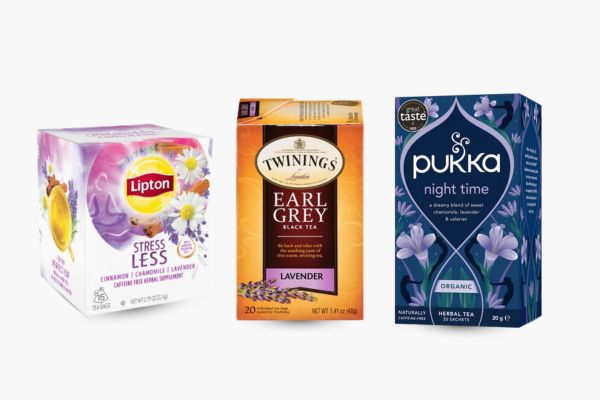
Functional herbs
Health remains a driving factor behind tea flavor trends, and functional ingredients like ginger, turmeric, lemongrass, and matcha are leading the way.
Ginger is widely used for its digestive benefits and warming spice. It is frequently paired with citrus or honey in immunity blends. Turmeric is rich in curcumin, which is known for its anti-inflammatory properties and golden color, making it ideal for energizing teas. In addition, lemongrass is gaining popularity in blends aimed at cleansing and hydration. It is often combined with mint, green tea, or botanicals for a light yet functional taste.
Matcha, a finely ground Japanese green tea powder, is the main flavor among new tea products launched in China, according to Mintel. Due to its antioxidant content and balanced energy boost, matcha is popular among health-conscious consumers. Unlike coffee, matcha provides a slow-release caffeine effect due to its high levels of L-theanine, supporting focus without the jitters.
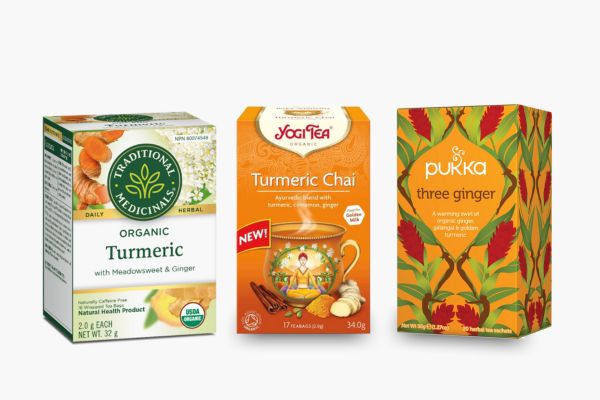
Bakery flavor
According to Innova Market Insights, bakery is the top category for new tea-flavored product launches in the past year. This trend reflects the growing interest in combining traditional baked goods, such as cakes, cookies, and pastries, with the distinct flavors of various teas like Earl Grey, jasmine, or oolong. Both familiar and innovative, this fusion of flavors appeals especially to adventurous consumers and younger demographics who seek novelty and variety in their food choices.
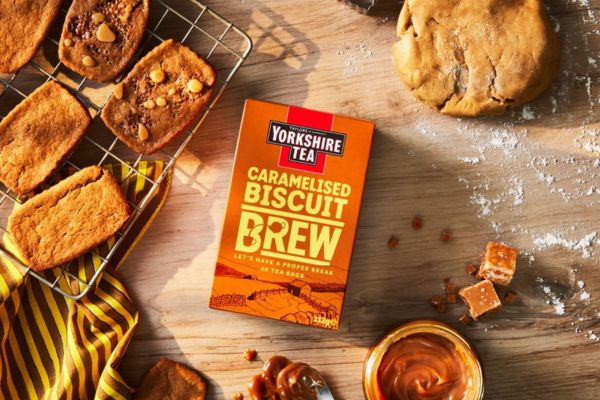
Emerging flavor innovations
In 2025, the tea industry will move beyond conventional favorite flavors and instead embrace a wave of innovation shaped by health science, beauty trends, and even nostalgia. These new tea trends aren’t just about being different, they reflect what people really care about today, like staying healthy, feeling emotionally connected, and celebrating cultural traditions.
Health boosting combinations
Today’s tea consumers expect more than hydration or comfort, they want tea that works. Brands are responding by blending multiple functional ingredients to create “wellness blends” that can support health.
For example, energy and focus formulations blend green and white tea bases with adaptogens like ginseng, rhodiola, and lion’s mane mushrooms. These combinations provide sustained energy without the crash associated with high-caffeine beverages. Meanwhile, immune support blends incorporate ingredients like elderberry, echinacea, and vitamin C-rich rosehip to create teas that support natural immunity. These formulations often feature citrus flavors like lemon and orange to enhance both taste and vitamin content.
Beauty-from-within formulations
“Beauty teas”, once a niche category, are becoming increasingly popular. These formulations are designed to support skin glow, hydration, and anti-aging from the inside out. Common ingredients include collagen peptides, rose hips (rich in vitamin C), and hibiscus (high in antioxidants).
Collagen-support teas combine collagen peptides alongside vitamin C-rich ingredients like hibiscus, acerola cherry, and rosehip. These formulas can be supplemented with berry flavors that boost natural collagen content while providing extra antioxidants for skin health. In addition, skin-brightening blends focus on ingredients that support healthy skin from within, including biotin, zinc, and selenium. These teas often have floral notes like rose petals, jasmine, and chamomile, creating a luxurious flavor experience and focusing on beauty support.
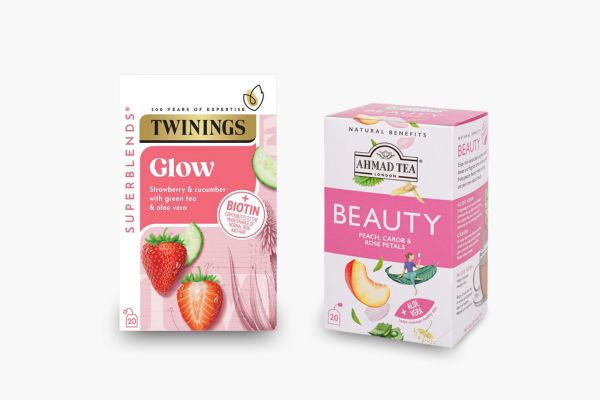
Nostalgic traditional flavors
The nostalgia trend is gaining strong momentum in 2025, with global consumers showing growing interest in products inspired by traditional recipes and familiar flavors. This movement reflects a return to authentic, time-honored taste experiences that offer comfort, emotional connection, and a sense of familiarity in an ever-changing world.
For instance, classic British tea traditions are experiencing renewed interest, with Earl Grey variations featuring bergamot oil alongside lavender, cornflower petals, and traditional black tea blends. English Breakfast and Afternoon Tea blends are being enhanced with historical additions like orange peel and rose petals.
Conclusion
Trending ingredients in tea flavor reflect changing consumer tastes, balancing traditional beverages with innovative functional benefits. To succeed in this dynamic market, brands must understand how flavor, health, and lifestyle intersect in the minds of their customers. We hope this article has provided valuable insights into current tea flavor trends and helps guide your product development in the right direction.
About Future Generation Co., Ltd
Future Generation Company Limited is one of the largest tea and beverage suppliers in Vietnam, with 28 years of experience in production and export. FGC is equipped with modern technology to produce tea, ensuring high-capacity production and uniformity between production batches. Thanks to using automatic systems in production along with high-speed grinding machines, we are able to supply large quantities of tea to the market, meeting consumer needs.
FGC strives to achieve our mission to become Vietnam’s leading healthy beverage company. Our factories also meet international standards such as ISO, HACCP, etc. In addition, we constantly innovate our machinery system, strengthen production capacity, and increase productivity. If you have any questions about matcha powder, feel free to contact us here:
Contact
Address: R4 building, Office Quarter 02, Royal City, 72A Nguyen Trai St., Thanh Xuan Dist., Hanoi.
Phone: +84 24 73 000 125/ +84 24 73 063 369
Mail: info@vietnam-tea.com
Website: https://oem-fgc.com/
Facebook: https://www.facebook.com/fgcvietnamtea
LinkedIn: https://www.linkedin.com/company/fgcvietnamtea/
Alibaba.com: https://fgcvietnam.trustpass.alibaba.com/
Source:
https://www.mintel.com/insights/food-and-drink/watch-trending-ingredients-to-watch-tea-flavor/
https://uk.synergytaste.com/wp-content/uploads/sites/5/2025/04/Coffee-and-Tea-Trend-Report.pdf
https://www.innovamarketinsights.com/trends/tea-flavor-trends-global/







